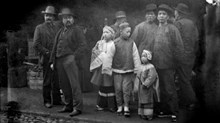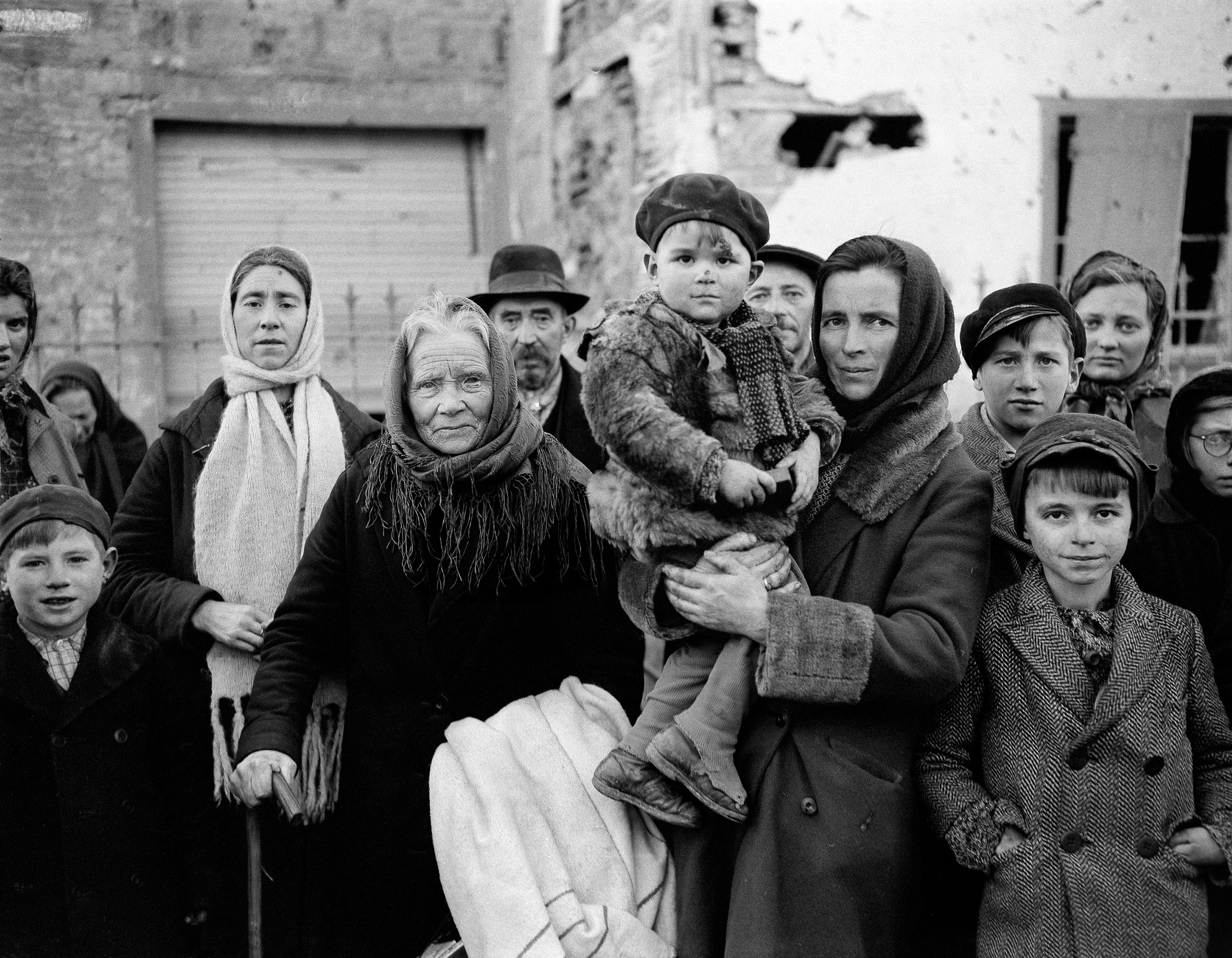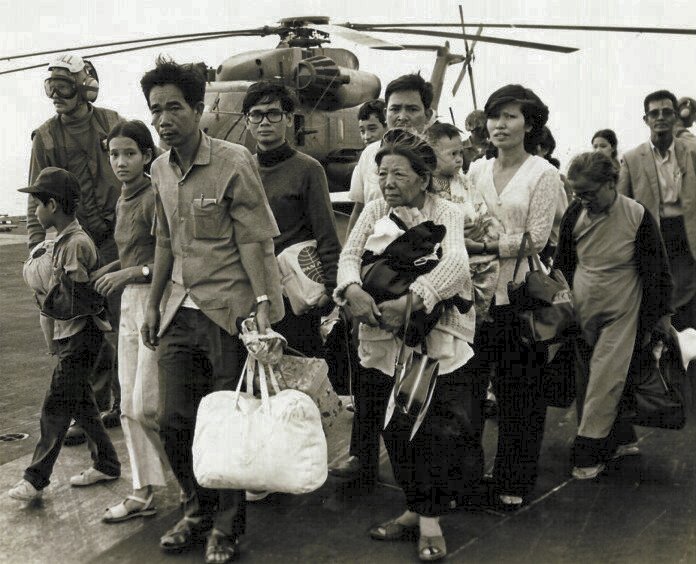Posts Tagged ‘Immigration Policy’
5 Times in U.S. History When Christians Advocated for Refugees and Immigrants
This year, the number of displaced people reached 100 million. That includes refugees, asylum seekers, and 53.2 million people displaced within their home country by conflict. And it’s a higher number than ever recorded in history.
In light of this, World Relief and other organizations have called for action – by the U.S. Government, community members, and the Church. Christian leaders are at the forefront of this advocacy, motivated by verses like Matthew 25:31-40.
“I was hungry and you gave me food, I was thirsty and you gave me drink, I was a stranger and you welcomed me.”
Matthew 25:31-40, in which Jesus tells His followers that caring for others is a way to serve Him directly.
A History of Welcoming the Stranger
The crisis may be greater than ever before, but throughout history, Christians have spoken up about immigrant and refugee needs.
In recent U.S. history, Christians have referenced Deuteronomy 24:14 as a moral reason to look out for the good of immigrants: “Do not take advantage of a hired worker who is poor and needy, whether that worker is a fellow Israelite or a foreigner residing in one of your towns.”
This Scripture has inspired countless people of faith to seek justice and care for immigrants navigating a foreign culture in the United States.
At times of prevalent anti-immigrant narratives, Christians have returned to the Bible’s command to care for immigrants and refugees. At times when the Church forgot its mandate, bold leaders reminded the Church of this biblical calling.
Here are 5 Times in History When Christians Led in Advocating for Immigrants and Refugees.
Advocating for Chinese Immigrants
In the 1840s and ‘50s, work in the California gold mines and garment factories, agricultural fields, and railroads drew thousands of Chinese immigrants to the U.S. West Coast. Eventually, more than 25,000 Chinese immigrants became the state’s largest non-white minority group. They formed vibrant communities in California. But despite being only .0002% of workers in the U.S., anti-Chinese sentiment began to grow, as white workers blamed them for taking jobs and depressing wages. Chinese immigrants faced growing discrimination, exclusion from community, and new anti-Chinese legislation. Eventually, the Chinese Exclusion Act of 1882 restricted Chinese people from migrating to the United States.

During this time, a Presbyterian pastor and missionary named William Speer became a vocal advocate for the fair treatment of Chinese immigrants. He used his relationships, knowledge of their language, and workforce data to argue against anti-Chinese legislation and even planted a Chinese Christian church in San Francisco in 1853. During his lifetime, he was vocal in opposition to racial prejudice and left a legacy of successors who contributed to fighting the racist anti-Chinese sentiment and joined with Chinese Christians to lead and channel Presbyterian support for the community.
Supporting Immigrants in the Community
At the turn of the 20th century, immigration to the U.S. ballooned. While conflicts and poverty pushed some immigrants to leave their home countries, the promise of jobs and economic opportunity drew others to the United States. Between 1880 and 1920, more than 20 million immigrants arrived – the majority from Southern, Eastern and Central Europe, including 4 million Italians and 2 million Jews. Unfortunately, many Protestants responded by working to restrict immigration and limit who could come to the United States (excluding Asians and other racial or ethnic groups) and promoting anti-Catholic messages and discrimination.

However, other Christians formed organizations and associations that helped immigrants integrate into the community. The YMCA in Cincinnati hosted the first known English as a Second Language (ESL) class in 1856 to help German immigrants gain language skill. Additionally, the YMCA served Asian communities in San Francisco. Then, in 1903, the YMCA created a specific department to work with industrial workers and immigrants, a legacy continued through to the YMCA’s present day adult education classes, refugee services, and New American Welcome Centers.
Welcoming World War II Survivors
By the end of the catastrophic World War II, millions of people were displaced throughout Europe or within their home countries. Many returned to their countries of origin within a few months of the war’s end. But for others, their home countries were irrevocably changed or unwelcoming. Among these were Jewish Holocaust survivors, many of whom spent years living in displaced persons camps alongside imprisoned Nazi perpetrators.

During this displacement, Catholic and Protestant congregations organized to respond. Christians joined with U.S. policymakers to convince American citizens to sponsor refugees. And while the U.S. Government created new resettlement legislation, Christian agencies and churches planned and implemented resettlement efforts, while also advocating before the government. In 1948, the United States passed the country’s first refugee and resettlement law. As a result, the government and Christian agencies partnered to help displaced Europeans seeking permanent residence in the United States after World War II. And to welcome the newcomers into community life.
Responding to Vietnamese Refugees
In 1965, the Immigration and Nationality Act fundamentally changed the American immigration system. Specifically, it removed quotes from the 1920s that had favored racial and ethnic groups over others and limited immigration from specific countries. The Act replaced them with a preference system that emphasized family reunification and skilled immigrants. In the next five years, immigration from countries torn by conflict, such as Cambodia and Vietnam, quadrupled. During this time, particularly from the 1950s until 1980, the U.S. Government’s refugee resettlement program was inconsistent, and the U.S. did not invest in refugee assistance. However, churches and faith-based organizations stepped up to fill in the gaps and help refugees get their footing.
Sometimes, this was done reluctantly. After two decades of conflict in Vietnam ended in 1975, 2 million Vietnamese people had been killed, 3 million were wounded, and 12 million had become refugees. In response, a woman named Evelyn Mangham emerged to call the Church to welcome Vietnamese refugees. With 20 years of experience as a missionary, Evelyn Mangham cold-called churches. She quoted the Bible. And she told stories. Because of her commitment to the Church and Scripture, she worked tirelessly to convince churches to sponsor refugees from Vietnam.
In the span of a year, she had convinced churches to sponsor 10,000 refugees from Vietnam, Laos, and Cambodia.

Founding World Relief
Ultimately, Evelyn Mangham went on to found World Relief’s refugee resettlement program alongside her husband, Thomas Grady Mangham, Jr.
We can thank this woman’s tenacity and conviction for World Relief’s 40-year history of refugee resettlement. And the impact continues today! All because Evelyn Mangham read Scripture and responded, believing that the Church must welcome the stranger.
“Her impact on the lives of those who are vulnerable will be felt for generations to come… I know there was a huge celebration for her in heaven as so many people whose lives she touched welcomed her to her eternal home.”
Jenny Yang, World Relief’s VP of Advocacy
Providing Safe Haven for Asylum Seekers
In the 1980s, nearly a million people fled Central American countries, crossing the U.S. border to seek asylum. Civil war and violence pushed people to leave home in El Salvador and Guatemala to seek safety. Yet a tiny fraction of those who crossed Mexico to the southwestern United States were approved for asylum.
The change came when Christians, alongside Jewish and other faith leaders, advocated on behalf of these migrants. The Sanctuary Movement began in 1980 with a goal: to provide shelters to Central American refugees fleeing civil wars. For instance, churches provided English lessons, basic humanitarian help, and legal aid through immigration attorneys. Additionally, leaders preached sermons, organized protests, and advocated to the government on behalf of the asylum seekers. And hundreds of religious communities provided sanctuary, usually inside houses of worship.
At its height, the movement grew to include more than 500 congregations.

Consequently, the Sanctuary Movement was successfully pushing the Reagan administration to pass the Immigration Reform and Control Act of 1986. This landmark piece of legislation extended temporary worker visa programs and helped 3 million people gain legal status.
Recent History
Today, there are nine agencies that work with the U.S. Government to resettle refugees. World Relief is one of them, along with five other faith-based organizations. One is Jewish, one is Catholic, and three others are Protestant. World Relief invites churches and Christians as a whole to welcome refugees and serve immigrants in the community – regardless of the religion, ethnicity, or country of origin of the newcomers.
As these five examples show, Christians have often been on the front lines of serving immigrants and refugees. Together, they have shaped history and the future of the country. Through action in faith, the Church has moved.
Today, Christians have another opportunity to act. And it’s at a pivotal time. Just like Christians throughout U.S. history, those who join World Relief are motivated by faith. And like Christians in the past, we have a calling. In response to a crisis, we can move together. Because of our faith and in light of the need, we can love our neighbors as Christ loves us.
And we can welcome the stranger.
Four Ways We Can Improve Our Immigration System
Over the past several months, Americans have been inundated with news and imagery from the U.S.-Mexico border. As policies have shifted, historically high numbers of people have arrived, including many intending to seek asylum in the United States.
People often ask me how we, as Christians, should respond to stories like these. We want to fix the problem and end the suffering, but, sadly, hard policy problems like asylum and refugee resettlement are much more complicated than the “easy fixes” hinted at in the headlines.
For one, the U.S. is particularly unprepared for this influx of people seeking refuge because our immigration system has been essentially dismantled over the last several years — both as a result of intentional policy decisions and by the COVID-19 pandemic — and it is taking time to rebuild it. We and our network of faith-based and community organizations are eager to partner with the government to care for vulnerable people, but currently lack the resources and workforce to handle this surge.
Nonetheless, the country is bound by various international treaties and domestic laws to give a hearing to particular categories of migrants, including unaccompanied children and anyone facing a credible fear of persecution. We cannot abandon either these national commitments or our celebrated heritage as a place of opportunity and new beginnings for those seeking refuge.
We need to seek change. A fair and humane solution to immigration policy and asylum issues will take time, patience, funding and focused political attention. Here are four ways we can change our immigration system in a comprehensive and humane way.
1. We must address the root causes driving asylum seekers to come to the U.S. in the first place.
Along with many Americans motivated by personal faith and the best of our national values, we are eager to welcome those who seek refuge in the U.S. But that eagerness is paired with lament; we grieve that anyone would feel they had no choice but to leave their homes and their countries of origin.
The factors that push people to flee countries such as Venezuela, Haiti, Cuba, Honduras, El Salvador and Guatemala include poverty, high rates of violent crime, environmental degradation and corruption. Finding themselves in grim circumstances, families make what is often a heart-wrenching decision to flee their homes for a better life.
The United States can first address the rise in asylum cases by working with other governments and organizations to make home for refugees a safe place, rather than a dangerous one. This can be done through diplomatic negotiations with governments and financial support for local and international NGOs working to create opportunity and improve safety for families. By being more proactive in this effort and increasing both U.S. governmental aid as well as churches, businesses and individuals stepping up their support, fewer families will feel compelled to make the journey to the southern border.
2. We can increase resources for processing asylum claims as a means of disincentivizing unlawful entry into the country.
Because legal asylum claims often take too long to find a legal hearing, many individuals cross the border illegally in the hopes that they will be apprehended and then given the hearing to which they are legally entitled. We can bring order to the border simply by investing in the right kinds of resources. If we can fairly and efficiently handle the rising volume of asylum claims, we can divert asylum seekers away from dangerous border crossings and to lawful ports of entry.
3. We can increase orderly, legal migration options accessible closer to home.
Most people who make a dangerous journey to the border do so because that’s the only way to lawfully request asylum. But if there was an option to request protections closer to home, either at a nearby U.S. consulate or in a neighboring country, most people would much prefer to reach safety in the U.S. via an airplane flight after being processed and vetted overseas. In fact, that’s basically the model of the U.S. refugee resettlement program, which has been functioning well for decades. For those fleeing poverty, not persecution, additional employer-sponsored visas would also create increased opportunities for lawful migration — while helping to address a stark labor shortage within the U.S. that is fueling inflation and economic stagnation.
4. We need bipartisan action by Republicans and Democrats in Congress.
While expanding refugee resettlement could be done by executive action, many other changes to the legal immigration system — such as facilitating legal immigration options for those fleeing poverty and seeking to fill needs in the U.S. labor market — would require congressional action. Those changes could be paired with a host of other reforms to our immigration laws. Immigration reform, however, will require bipartisan cooperation between the new administration and both political parties. Securing bipartisan cooperation now can ensure we move beyond quick fixes and make lasting changes for years to come.
We need to invest in better immigration policies that can spur economic growth, protect our national security and offer comfort to the vulnerable. But change will not happen overnight. Our short-term efforts to alleviate suffering should not come at the expense of the broader reforms needed for an effective—and more humane—immigration policy.
I encourage you to educate yourself about some of the pressing issues surrounding immigration policies, lean into hard conversations and risk feeling uncomfortable. Together, we can raise our voices in support of those whose voices are often ignored, marginalized or overlooked. We can be advocates for those fleeing violence, poverty and oppression and respond to their cries for help — just as our heavenly Father listens and responds to us.
To stay informed about issues related to immigration, mass displacement, extreme poverty and more, sign up for our monthly newsletter or subscribe for advocacy alerts!
This blog was originally published on July 8th, 2021 and was recently updated on May 26th 2023.

Scott Arbeiter retired from World Relief in 2021 as president after serving the organization in various roles for more than two decades and is a former pastor of Elmbrook Church in Brookfield, Wisconsin.

Matt Soerens began his World Relief journey in 2005 as an intern in Nicaragua and now serves as the VP of Advocacy and Policy. Since then he served as a Department of Justice-accredited legal counselor in Chicagoland before assuming the role of U.S. Director of Church Mobilization and Advocacy. Matt is the co-author of three books including Welcoming the Stranger (InterVarsity Press, 2018) and Inalienable (InterVarsity Press, 2022). Matt also serves as the National Coordinator for the Evangelical Immigration Table, a coalition that advocates for immigration reforms consistent with biblical values. He is a graduate of Wheaton College, where he has also served as a guest faculty member in the Humanitarian & Disaster Leadership program, and earned a master’s degree from DePaul University’s School of Public Service. He lives in Aurora, Illinois with his wife Diana and their four children.
Everything You Need to Know About Unaccompanied Minors at the Border, Part 2
A Conversation with Matthew Soerens and Jenny Yang
Recently we’ve seen reports of another “crisis” at the U.S.-Mexico border, particularly related to children, or ‘unaccompanied minors.’
We continue to explore and understand what’s actually happening, what should be happening?, and what can followers of Jesus who care about vulnerable children do?
We’re continuing the conversation World Relief’s President, Scott Arbeiter, started with Jenny Yang and Matthew Soerens, World Relief’s in-house immigration policy experts and co-authors of Welcoming the Stranger: Justice, Compassion and Truth in the Immigration Debate to help us understand what’s currently happening at the border. (If you missed part 1, listen or read to it here.)
Quick Facts:
Immigration policy can be confusing and hard to keep track if you aren’t familiar with the language. Below are a few key terms to keep in mind as you listen and/or read.
TVPRA: The Trafficking Victims Protection Reauthorization Act. A 2008 law that, among many other elements, governs how unaccompanied children identified at the border are to be treated.
Title 42: A public health law that both the Trump and Biden administrations have cited as a legal justification to turn away asylum seekers because of the COVID-19 pandemic.
Migrant Protection Protocols: A Trump administration policy that required most asylum seekers who arrived at the U.S.-Mexico border to “remain in Mexico” to await their court hearings, rather than being allowed to wait safely in the U.S. for their court proceedings.

Scott Arbeiter is a former pastor of Elmbrook Church in Brookfield, Wisconsin, and the president of World Relief, which is a subsidiary of the National Association of Evangelicals.




